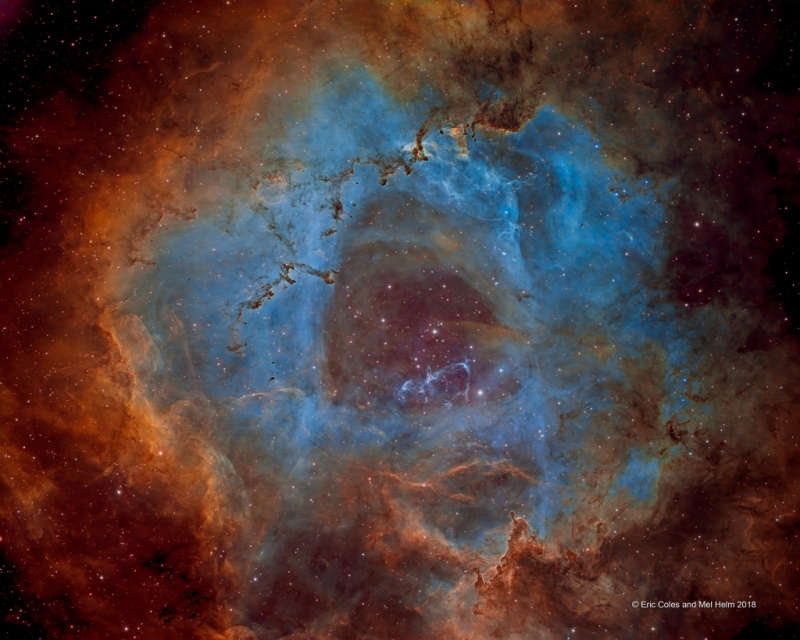Credit & Copyright: Eric Coles and
Mel Helm
Explanation:
Not all roses are red
of course,
but they can still be very pretty.
Likewise, the beautiful
Rosette
Nebula and other star forming regions are often shown in
astronomical images with a predominately red hue,
in part because the dominant emission in the nebula is
from hydrogen atoms.
Hydrogen's strongest optical emission line, known as H-alpha,
is in the red region of the spectrum, but the beauty of an
emission nebula need not be appreciated
in red light alone.
Other
atoms in the nebula are also excited by energetic
starlight and produce narrow emission lines as well.
In this gorgeous view of the Rosette Nebula,
narrowband images are combined to show
emission from sulfur atoms in red, hydrogen in blue, and
oxygen in green.
In fact, the
scheme of mapping these narrow atomic
emission lines into broader colors is adopted in
many Hubble images
of stellar nurseries.
The image spans about 100 light-years in
the constellation Monoceros, at the 3,000 light-year
estimated
distance of the
Rosette
Nebula.
To make the Rosette red, just follow
this link or
slide your cursor over the image.
1999 2000 2001 2002 2003 2004 2005 2006 2007 2008 2009 2010 2011 2012 2013 2014 2015 2016 2017 2018 2019 2020 2021 2022 2023 2024 2025 |
Январь Февраль Март Апрель Май Июнь Июль Август Сентябрь Октябрь Ноябрь Декабрь |
NASA Web Site Statements, Warnings, and Disclaimers
NASA Official: Jay Norris. Specific rights apply.
A service of: LHEA at NASA / GSFC
& Michigan Tech. U.
|
Публикации с ключевыми словами:
NGC 2244 - Rosette Nebula - star formation - emission nebula - Туманность Розетка - звездообразование - эмиссионная туманность
Публикации со словами: NGC 2244 - Rosette Nebula - star formation - emission nebula - Туманность Розетка - звездообразование - эмиссионная туманность | |
См. также:
Все публикации на ту же тему >> | |
